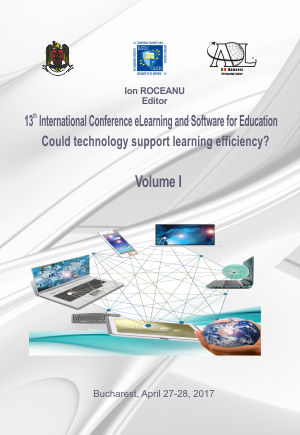USING TACTILE LETTERS AS AN ASSISTIVE TECHNOLOGY IN TEACHING ALPHABET FOR DYSLEXIC CHILDREN: A CASE STUDY
USING TACTILE LETTERS AS AN ASSISTIVE TECHNOLOGY IN TEACHING ALPHABET FOR DYSLEXIC CHILDREN: A CASE STUDY
Author(s): Mariam MOHAMAD, Sabrina Jessica TAN ABDULLAHSubject(s): Social Sciences, Education, Higher Education
Published by: Carol I National Defence University Publishing House
Keywords: Dyslexia; assistive technology; tactile letters; alphabet learning; mobile application.
Summary/Abstract: Dyslexia is a specific learning disability characterized by difficulties with accurate and/or fluent word recognition, poor spelling and poor decoding abilities. Dyslexic children are having language learning disorder and makes them difficult mastering the skill to read, spell and write. This research explores the design from tactile letters to mobile application that support alphabet recognition and early reading acquisition in children, particularly dyslexic children. The research design of this study is qualitative based on case study methodology. The approach of tactile letters and mobile application which could foster learning and help dyslexic children to improve some of their fundamental skills, such as recognizing alphabet and pronunciation. This study describes the design and evaluation of an assistive technology based in lieu of teaching alphabet for dyslexic children. The combination of tactile letters and mobile application may be the ground-breaking of stimulating and interactive experience for children that could encourage the learning process.
Journal: Conference proceedings of »eLearning and Software for Education« (eLSE)
- Issue Year: 13/2017
- Issue No: 01
- Page Range: 167-173
- Page Count: 7
- Language: English

